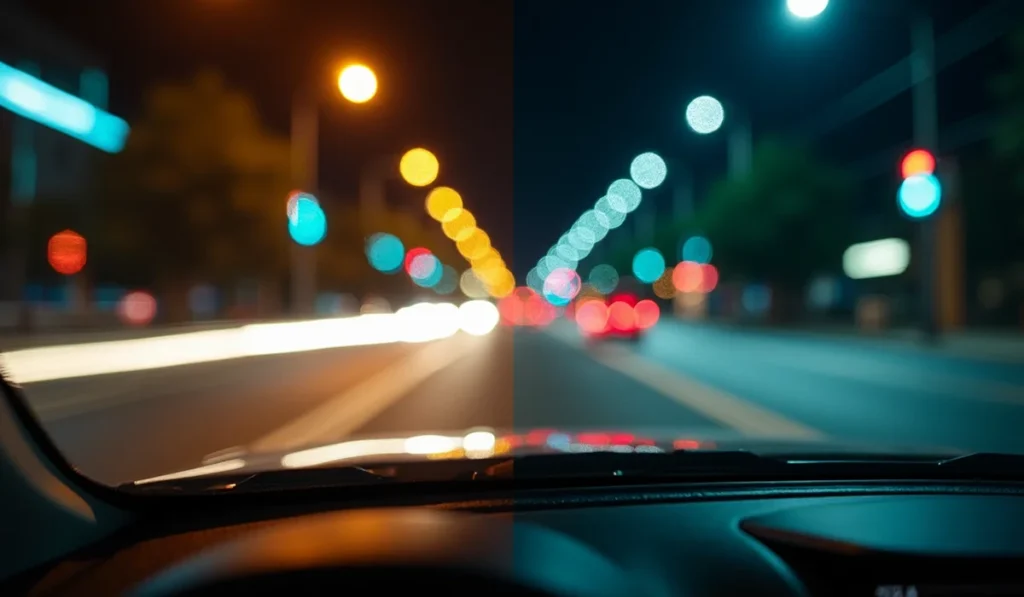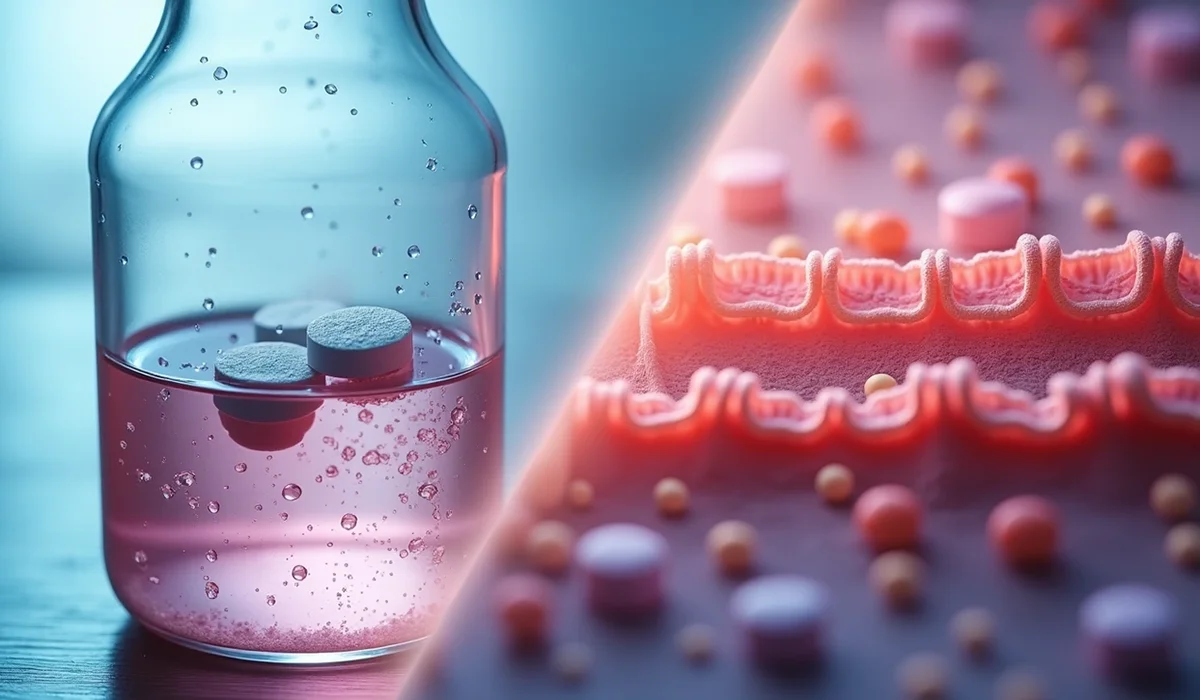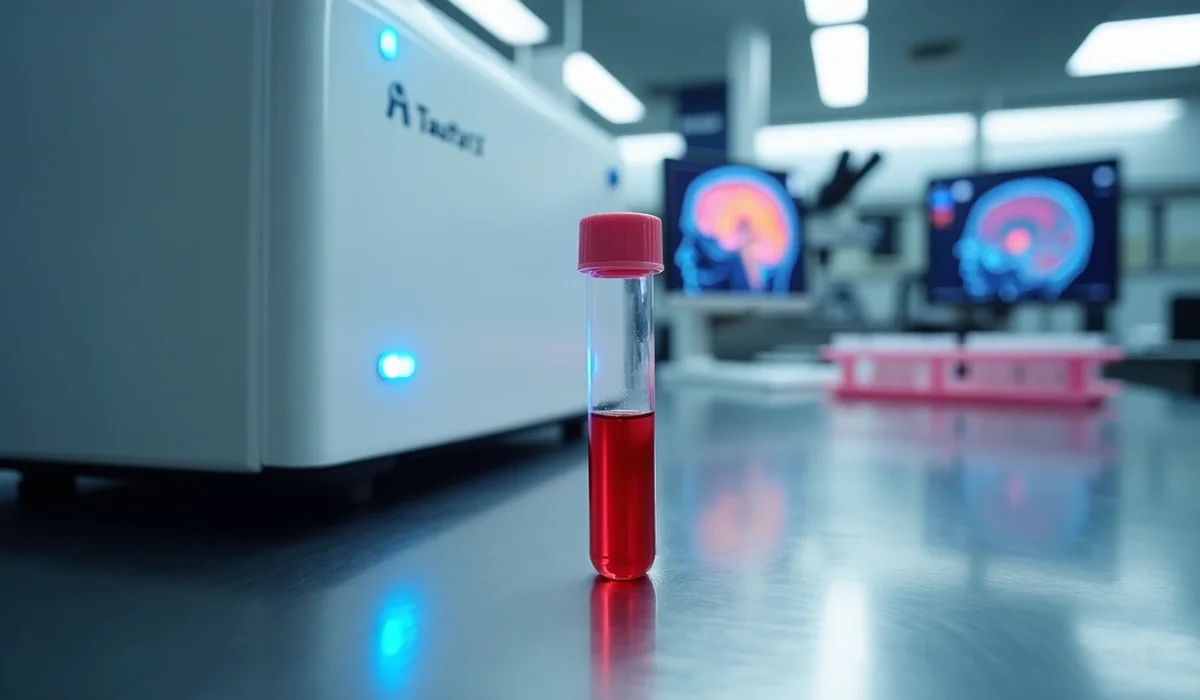A recent AAA survey of 2,000 people from eight states reveals a dangerous belief about cannabis use and driving. The results show that 46.9% of users think their driving remains unchanged after consuming marijuana. More concerning is that 19.4% believe they drive better while high. This misconception persists even though 38 states allow medical marijuana and 23 permit recreational use. Scientific evidence contradicts these beliefs completely.
The law clearly prohibits driving under marijuana’s influence. Research shows marijuana’s negative effects on a driver’s essential skills. The drug reduces attention span, makes reaction times slower and disrupts coordination. The situation has become more serious with time. Ontario’s emergency departments reported a 475% rise in cannabis-related traffic injuries between 2010 and 2021. Cannabis has emerged as the second most detected drug in drivers involved in crashes, right after alcohol. This growing threat to public safety demands immediate attention.
AAA Survey Reveals Drivers Underestimate Cannabis Risks
The AAA Foundation for Traffic Safety has completed two complete studies that show cannabis users have alarming misconceptions about driving under the influence. These studies offer significant insights into behaviors that put road safety at risk nationwide.
Survey methodology and key findings
The AAA Foundation ran parallel research projects with careful attention to detail. The first study asked 2,000 confirmed cannabis users from states of all types, while the second project looked at 800 participants to assess what makes safety messaging work. Both surveys benefited from expert input in public health, law enforcement, traffic safety, and cannabis.
The results show a worrying picture of cannabis use and driving habits:
- Frequent use is common – 44.1% of respondents use cannabis multiple times daily
- Regular driving is prevalent – 57.8% say they drive every day
- High-risk behavior is normalized – A whopping 84.8% said they drive the same day they use cannabis
- Immediate impairment risk – 53% said they use cannabis an hour or less before driving
The survey also showed how behavior changes by location. Cannabis users in states with full legalization were less likely to drive the same day (78.4%) compared to medical-only states (86.5%) and states where cannabis remains illegal (87.9%).
The studies found a big gap between what law enforcement can do and what people think. Only 29.2% of respondents thought police officers could spot cannabis influence, while 46.7% didn’t think officers could identify impairment, and 24.1% weren’t sure.
Public misconceptions about driving high
The research found many wrong ideas that go against scientific evidence about cannabis-impaired driving. These misconceptions exist in all age groups and demographics.
The most dangerous wrong idea involves how well people think they can drive. Nearly half (46.9%) of cannabis users think they drive just as well after using it. Even worse, 14.7% think cannabis makes them “a little better” at driving, while 19.4% believe it makes them “much better” drivers. Science clearly shows cannabis hurts key driving skills.
People also misunderstand the law. Cannabis might be legal for fun or medicine in many states, but driving under its influence is illegal everywhere. In spite of that, users remain confused:
- In fully legal states, over 90% knew their state’s legal status correctly
- In medical-only states, 38.4% wrongly thought cannabis was fully legal
- In completely illegal states, 16.8% thought cannabis use was legal when it wasn’t
Plus, many cannabis users wrongly think tolerance means they’re not impaired. Research says otherwise, showing even regular users struggle with complex tasks like driving. This wrong idea helps explain why one in eight U.S. adults says they’ve driven under marijuana’s influence.
The survey found cannabis users respond best to safety messages about personal responsibility rather than legal consequences. The AAA Foundation learned that safety messages work best when they use trusted voices, real-life scenarios, and respectful language that stays away from stereotypes.
Major organizations see how serious these misconceptions are. The CDC confirms that cannabis affects brain areas that control movement, balance, coordination, memory, and judgment—everything needed for safe driving. MADD has pointed out public confusion too, noting that 41% of people either don’t know or wrongly believe regular cannabis users stay unimpaired.
These findings highlight a major public safety challenge as more states legalize cannabis. With 38.6% of users saying they’d trust messages from cannabis industry groups, mutually beneficial alliances between traffic safety supporters and the cannabis industry could help educate people about these dangerous misconceptions.
Scientific Studies Confirm Cannabis Impairs Driving
Scientific research and clinical studies clearly show that cannabis makes driving dangerous. The effects last several hours after use. Many people think they can drive safely after using cannabis, but the science tells a different story. Even experienced users show measurable problems with their driving skills.
How does marijuana affect driving?
Cannabis messes with brain functions you need to drive safely. THC, the main compound that gets you high, works on parts of your brain that control movement, balance, coordination, memory, and judgment. This creates several big problems with driving:
- Impaired cognitive function: You can’t focus as well, see things clearly, or remember things in the short term
- Decreased motor coordination: You struggle to keep your car in position, maintain speed, and react to road conditions
- Altered perception: Your sense of time changes and you have trouble judging how far away things are or how fast they’re moving
- Divided attention deficits: You find it much harder to watch and respond to different things at once—something you must do to drive safely
These problems show up in the way people drive. Studies reveal that drivers who use cannabis weave between lanes more, keep changing their following distance, and can’t maintain steady speeds. Some try to make up by driving slower or staying further back from other cars, but that’s not enough to make up the difference.
How does weed affect driving reaction time?
Scientists keep finding one thing over and over: cannabis makes your reaction time much slower, which is vital to avoiding crashes. Here’s what studies have found:
People who use cannabis take longer to react to sudden obstacles, traffic lights, and other vehicles. This happens whether they feel high or not. The brain needs more time to process what’s happening and respond to changing road conditions.
The slowdown can be quite serious. In driving simulators, people who smoked cannabis showed much slower reactions after 30 minutes, and these problems stayed around for at least 90 minutes. The scary part? Many thought they were fine to drive.
Both occasional and regular users face these issues, though experienced users might show different patterns. A study found that while people didn’t want to drive right after smoking, 68.6% said they were ready to drive after 90 minutes, even though their performance hadn’t improved.
Driving high statistics from clinical trials
The numbers from clinical trials paint a clear picture:
Your risk of getting into an accident doubles after using cannabis. Tests in simulators and real driving conditions show medium-level effects (Cohen d around 0.50), which means the problems are real and serious.
Different ways of using cannabis affect you for different lengths of time. Smoking hits you within minutes and peaks within three hours. Edibles take up to an hour to kick in but can affect you for up to eight hours. Some research shows driving problems can last up to 6 hours after smoking and 8 hours after eating cannabis products.
Blood THC levels are linked to how impaired you become. Levels between 2-5 ng/mL cause substantial driving problems, especially in occasional users. But here’s something interesting: experienced users who control their intake don’t show a reliable connection between THC levels and driving problems.
Mixing cannabis with even a little alcohol makes things much worse than either one alone. Using both together is extremely dangerous, no matter how little you take.
These findings show that driving high isn’t safe, and people can’t judge how impaired they really are. The data shows that while people feel more confident about driving 90 minutes after using cannabis, their actual driving skills haven’t gotten any better.
Experts Warn Driving High is Dangerous and Illegal
Legal experts and police officers nationwide caution drivers about the serious legal risks of driving after using cannabis. This applies whatever the state’s marijuana laws say. More states now allow legal cannabis use. This creates new challenges for police trying to catch and prosecute impaired drivers. The message stays simple – driving high breaks the law and puts lives at risk.
Is driving high illegal in most states?
The answer leaves no room for doubt. Driving under the influence of marijuana breaks the law in every state across the U.S. This rule stands firm even where states permit recreational or medical cannabis use. Right now, 38 states plus Washington D.C., Guam, Puerto Rico, and the U.S. Virgin Islands allow medical marijuana programs. Meanwhile, 24 states and Washington D.C. have legalized recreational use.
States use three main approaches to handle cannabis-impaired driving laws:
- Effects-based laws: 33 states make it illegal to drive when cannabis truly impairs you. Police look at all available evidence to prove impairment.
- Per se laws: Five states—Illinois, Montana, Nevada, Ohio, and Washington—set specific legal limits. THC levels in blood must stay between 2 to 5 nanograms per milliliter.
- Zero tolerance laws: Twelve states—Arizona, Delaware, Georgia, Indiana, Iowa, Michigan, Oklahoma, Pennsylvania, Rhode Island, South Dakota, Utah, and Wisconsin—ban driving with any trace of THC or its metabolites.
Colorado takes a “reasonable inference” approach. Courts can assume impairment when THC levels pass 5 ng/ml. Drivers can still prove they weren’t actually impaired.
Prosecuting marijuana-impaired driving cases brings unique challenges. Alcohol shows up reliably in breath tests with clear impairment limits. Cannabis detection works differently. THC stays in someone’s system for weeks after the high wears off. In fact, THC has a half-life of about 7 days. Complete elimination from urine takes up to 30 days.
Penalties for marijuana-impaired driving
Getting caught driving high leads to penalties just as harsh as alcohol DUIs. First-time offenders usually face:
- Fines up to $1,000
- License revocation for six months
- Possible jail time up to one year
- Mandatory drug education programs
Repeat offenders face much tougher consequences. Many states treat second offenses within 10 years as felonies, leading to:
- Much higher fines that can reach thousands of dollars
- Longer license suspensions
- Prison sentences up to seven years
- Permanent criminal records that stay on your record forever
The toughest penalties come when kids get involved. New York’s Leandra’s Law makes driving high with passengers under 16 an automatic Class E felony, even for first-time offenders. If a child gets hurt or dies, charges jump to Class B or Class C felonies. These carry minimum sentences of four years and can go up to 25 years.
Police need special training to spot cannabis impairment. More than 6,000 officers nationwide have earned certification as Drug Recognition Experts (DREs). New York State shows the shortage – among its 50,000+ law enforcement officers and 500+ police forces, only 446 hold DRE certification.
Officers must follow a detailed 12-step evaluation. This includes checking pupils, testing coordination, watching balance, and measuring pulse and blood pressure. This makes these cases harder to prove than alcohol cases, where a simple breathalyzer reading above 0.08% BAC proves guilt.
Medical marijuana cards offer no protection. Users with medical cards face similar charges and penalties if they drive high. The bottom line stays clear – whatever your state’s cannabis laws, driving under its influence breaks the law.
Drivers Misjudge Their Own Impairment After Cannabis Use
A scientific study in JAMA Psychiatry reveals a troubling fact about cannabis users: they can’t tell if they’re safe to drive after using marijuana. This disconnect between feeling okay and being impaired creates major safety risks on American roads.
Disconnect between perceived and actual impairment
Research shows that cannabis users feel less impaired about 90 minutes after smoking. Their actual driving skills remain compromised. Users start feeling confident about driving exactly at the time when they shouldn’t.
A controlled study revealed something interesting. People didn’t want to drive right after using cannabis. Yet 68.6% said they felt ready to drive 90 minutes later. Their driving hadn’t improved from their original post-smoking performance. This shows a dangerous gap between how they felt and what they could actually do.
Cannabis impairment works differently from alcohol. Users notice they’re impaired right away but think they recover faster than they do. People who drink alcohol usually don’t realize how impaired they are throughout their experience.
The evidence explains three troubling statistics:
- All but one of these cannabis users (46.9%) think they drive the same after using
- 34.1% think marijuana makes their driving better (14.7% “a little better” and 19.4% “much better”)
- Only 19% know their driving gets worse after cannabis use
A researcher pointed out: “Participants’ increasing willingness to drive at 1 hour 30 minutes may indicate a false sense of driving safety”. This overconfidence means users often drive while still impaired.
Psychological factors influencing risk perception
Several psychological factors explain why users can’t judge their impairment level correctly. Regular users build tolerance – they feel less high but still have cognitive and motor impairment. Many users don’t see marijuana as a “real drug” and call it safer than alcohol or other substances.
Age plays a role in how people see these risks. Young people between 15-24 don’t fully understand cannabis-related driving dangers. One in five young cannabis users admits to driving after consumption.
Some people use cannabis to deal with anxiety or depression, which affects how they judge risks. The self-medication theory suggests people who use cannabis to handle negative emotions might ignore the associated risks.
The problem gets worse because many users think police can’t catch them. Only 29.2% of users believed officers could spot cannabis influence. 46.7% thought detection wasn’t possible, while 24.1% weren’t sure.
Regular users tend to downplay risks. Studies show that “heavy users notice less harms in marijuana and other drug use”. People who use cannabis more often see it as less dangerous – experts call this risk normalization.
This research sends a clear safety message: cannabis users can’t tell when they’re safe to drive after smoking. The actual impairment lasts longer than feeling high. This creates a dangerous situation where users think they can drive but remain impaired.
Cannabis Industry and AAA Launch Awareness Campaigns
Public concerns about cannabis-impaired driving continue to grow. Safety organizations and the cannabis industry have joined forces nationwide. Their shared goal focuses on teaching consumers about the risks of driving high through awareness campaigns and targeted messages.
Partnerships with dispensaries for safe driving education
Massachusetts leads the way as the first recreational-use cannabis state with a structured marijuana-impaired driving curriculum in driver education. The state launched “Shifting Gears: The Blunt Truth about Marijuana and Driving,” which reaches about 50,000 young drivers each year across 460 driving schools. This revolutionary program emerged through collaboration between the state’s Registry of Motor Vehicles, AAA Northeast, and the Massachusetts Cannabis Control Commission.
The program features a 25-minute video that explains how THC affects cognition, vision, reaction time, and perception of time and distance. Massachusetts Governor Charlie Baker stated that this addition to driver education “is important for the safety and wellbeing of teens that are just learning to drive”.
Colorado has taken a different approach with an online “budtender course” to teach cannabis retail workers about impaired driving. The program recognizes that “cannabis industry employees—in particular, budtenders and cannabis retail workers—play an important role in changing the public perception around driving high”.
Public health messaging strategies
AAA Foundation research shows cannabis consumers respond better to certain safety messages. Messages that focus on personal responsibility and safety concerns work better than those about legal consequences. The message that resonated most stated: “Driving high isn’t just reckless; it’s selfish. Think twice before getting behind the wheel after using marijuana”.
Effective messaging depends on:
- Realistic, positive, and diverse content that avoids stereotypes
- Credible voices and ground scenarios
- Respectful language tailored to the intended audience
The cannabis industry stands out as a trusted source of safety information. Research shows 39% of cannabis users trust safe-driving messages from cannabis industry groups, brands, and companies. This creates opportunities for policymakers to work with these groups to develop meaningful messaging.
The National Highway Traffic Safety Administration has used these lessons in its “If You Feel Different, You Drive Different” campaign with the Ad Council. The campaign wants to change cultural conversations around marijuana-impaired driving “to make it as socially unacceptable as driving drunk”.
Safety organizations and the cannabis industry have united behind one clear message: “If you consume cannabis, don’t drive. If you plan to drive, don’t consume cannabis”.
States Struggle to Set Clear Cannabis Driving Laws
States in America struggle to create enforceable laws for cannabis-impaired driving, unlike alcohol impairment which has clear legal standards. This regulatory gap leads to inconsistent enforcement and public confusion as legalization continues to expand.
Challenges in measuring THC impairment
Scientists haven’t agreed on what level of THC shows impairment. Some states have set arbitrary limits between 2-5 nanograms of THC per milliliter of blood, but these thresholds lack scientific backing. The AAA Foundation for Traffic Safety determined that per se laws are “arbitrary and unsupported by science”.
THC’s unique properties cause this uncertainty. Blood tests can detect cannabis compounds well after the high wears off. Regular users might test positive for weeks after their last use without showing any signs of impairment. Current blood tests can’t tell the difference between recent use and leftover THC.
Field sobriety tests don’t help much either. RTI International’s research showed that standard field sobriety tests “were not sensitive to cannabis intoxication for any of the study participants”. Drug recognition expert (DRE) evaluations face legal hurdles too. A Maryland court ruled that DRE protocols “failed to produce an accurate and reliable determination” of drug impairment.
Differences between alcohol and cannabis DUI laws
States have taken three different approaches to cannabis DUI, unlike the uniform alcohol laws:
- Effects-based laws (33 states): Make it illegal to drive while actually impaired, based on all available evidence
- Per se laws (5 states): Set specific THC thresholds as legal limits
- Zero tolerance laws (12 states): Ban driving with any detectable THC
Colorado uses a unique “permissible inference” approach. Courts can assume impairment at 5 ng/ml, but drivers can challenge this assumption.
These substances affect the body differently. Alcohol breaks down at a predictable rate and shows a clear link between blood concentration and impairment. THC has a “poor correlation” with actual impairment. THC levels can peak when impairment is low, and high impairment can exist after THC levels drop.
No standard marijuana “breathalyzer” exists yet. Blood testing needs warrants and medical staff, which makes enforcement difficult. Many states still find it hard to establish clear, enforceable standards for cannabis-impaired driving because of these complexities.
Conclusion
Cannabis-impaired driving misconceptions have ended up becoming our biggest public safety challenge. Scientific evidence shows how marijuana consumption impairs everything in driving skills, even as legalization spreads across the United States. A driver’s reaction time slows down, coordination suffers, and cognitive function diminishes. These effects happen whatever the users feel about their impairment or their belief about driving better when high.
The gap between what people notice and actual impairment creates dangerous situations where cannabis users don’t judge their driving safety correctly. Their false confidence puts everyone at risk, especially when you have users feeling “normal” about 90 minutes after consumption while still being impaired. Cannabis DUI remains illegal in all states, but law enforcement don’t deal very well with the lack of standardized testing methods like alcohol breathalyzers.
States’ different approaches to cannabis DUI laws—from effects-based enforcement to per se limits and zero tolerance policies—definitely show the scientific uncertainty in measuring cannabis impairment. Notwithstanding that, mutually beneficial alliances between safety organizations and the cannabis industry show promise to work for educational campaigns. These groups understand that messages about personal responsibility appeal more to cannabis users than legal threats.
Research must continue alongside consistent enforcement and public education about ground risks of driving high. The evidence leaves no doubt—cannabis affects a driver’s ability in ways that endanger road safety for everyone. This reality’s acceptance marks our first step toward reducing cannabis-impaired driving and its preventable tragedies.





